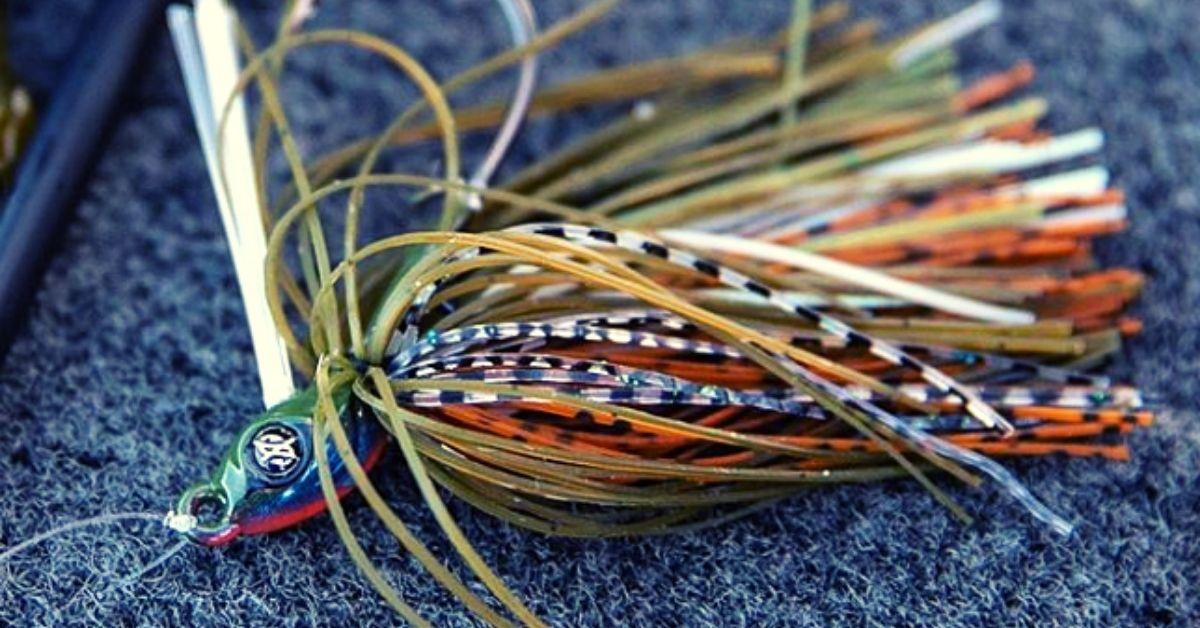Swim Jig Fishing 101: How To Fish A Swim Jig
The standard bass jig has always been a staple bottom-bouncing lure for decades, but the lure became more versatile when savvy anglers started swimming it for suspended bass.
The History Behind The Bait
Back in the 1980’s, anglers in Alabama, Wisconsin, Arkansas and some other states started swimming a jig around aquatic vegetation to catch bass,
I started swimming a 1/4-ounce gray-and-blue Arkie jig tipped with a blue Guido Bug around boat docks on Lake of the Ozarks in the late 1980’s. This tactic works best for me in the fall when bass are hiding in the shady areas of docks and ambushing any shad that swim into their strike zone.
It's All In In Your (Jig) Head
The main difference between a standard casting jig and a jig designed for swimming is the head design. Swim jigs feature a pointed nose with a vertical line tie so the lure swims through the water column and easily slips through cover. Most of the weight on the jig’s head is positioned towards the bottom of the jig so it will swim upright. Casting jigs have more or a round head or a flat-bottom head so the lure can stand up on the bottom.
Key times to work fast moving jigs are in the spring during the shad spawn and in the fall when shad are in shallow water. Bass can also be caught during these times on spinnerbaits, buzz baits and Chatterbaits, but fishing pressure and cold font conditions can cause bass to ignore these lures, yet the subtle presentation of swimming a jig will still trigger reaction bites.
Swimming a jig produces best when keying on any cover such as boat docks or aquatic vegetation that serves as an ambush point rather than fishing the lure along an open bank. Some of the best weeds for swimming jigs are lily pads, water willows, milfoil, matted maiden cane and hydrilla with a tapered edge that forms a cavern underneath the weeds. Edges and holes in the weeds are key locations for swimming a jig in the fall.
The Quarter Ounce Does It All
A 1/4-ounce jig is my favorite size for the swimming jig tactic because it is light enough to keep the lure near the surface during my retrieve yet is heavy enough that I can still make long accurate pitches to my targets. I will sometimes switch to a heaver jig such as a 3/8- or 1/2-ounce model if I want the jig to slide by the cover faster and trigger more reaction strikes.
Preferred Swim Jig Trailers
My favorite trailer is a plastic craw because its flat bottom glides through the water creating a more natural swimming action for my jig. Other jig trailers that work well for the swimming technique are 2- or 3-inch swimbaits, creature baits, double-tail plastic grubs and beaver-style baits. I prefer the plastic craw and beaver-style trailers for a more subtle presentation, but switch to the swimbaits, creature baits and double-tail plastic grubs for fishing on the heavier baits to create plenty of tail action for more aggressive bass.
The Best Swim Jig Colors
A white jig with a pearl or white plastic trailer is the standard color combination, but bass tend to short strike this bright color combo at times, so I prefer a more subtle color scheme of a gray-and-blue jig with a blue trailer. A green pumpkin or watermelon seed jig tipped with a plastic trailer in the same color also works for swimming a jig when bass are feeding on bluegill.
The Right Retrieval Speed
I retrieve my jig with a high-speed baitcast reel (7.1:1 or higher gear ratio) filled with 50-pound braid or 20-pound fluorocarbon line. Keeping my rod at about the 11 o’clock position, I pop the rod a bit during my retrieve so the bait hops and slightly wakes the surface. I retrieve the jig at a fast steady clip so it stays close to the surface.
When bass hiding in weeds or under docks are reluctant to hit fast-moving lures such as a spinnerbait or buzz bait, try slowing down your presentation and tempting the fish with a swimming jig.
Updated January 22nd, 2021 at 2:51 AM CT


